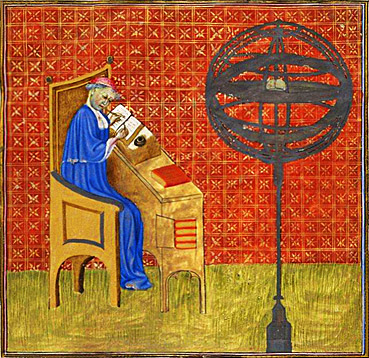Summary
This essay is dedicated to the search for the origins of our modern quantitative and metric approach to nature which, according to evidence here presented, are to be found in the medieval science of acoustics. The central figure in our argument is Nicole Oresme, whose Tractatus de configurationibus qualitatum et motuum of ca. 1350 featured novel graphic techniques which figuratively represented intensities of permanent qualities and intensities of qualities and velocities over time in terms of multidimensional functions. Closely related to this method was the development of a qualitative measure of qualities (quantitas qualitatis). This new and purely mathematical view of the problem rendered the century-old debate over the ontological status of qualities (intensio et remissio formarum) quite redundant. It is usually claimed that Oresme's method lacked both an empirical base and a measurable application, that it possessed a merely hypothetical or metaphysical nature and that it was given to figurative symbolism. However, this view is badly mistaken, for it ignores the results presented in Oresme's large section on music. For upon closer scrutiny, Oresme's views on music reveal themselves as the core to his concerns and as our key to the complete re-evaluation of his methodology. His musical doctrines are also of great interest as precursors to the seventeenth century's concerns with the scientific bases of acoustic and Helmholtz' nineteenth-century investigations of sound psychology.
The present essay is arguing the following points:
I) Oresme's theory of configurations is usually based on a horizontal line representing a subject or time and on the vertical representations of various intensities, with the resulting upper line adding up to the configuratio of a quality or movement and the total surface enclosed by the two lines being the quantitas qualitatis. In establishing a commensurability between quantities and qualities, Oresme broke with the Aristotelico-Euclidean requirement that the measure be of the same genus as the measured. The salient point for us is that in order to legitimate the measurement of intensive magnitudes by extensive magnitudes, Oresme took recourse to music, where tone intervals were routinely determined by subdividing the string of a monochord. In fact, since the sonus was the only intensive magnitude or quality that was measurable in those days, it was of a truly paradigmatic importance, for it proved i) the quantifiability of qualities; and ii) the commensurability of magnitudes of different genera.
II) Furthermore, Oresme's very configuratio qualitatum and the functional pluridimensionality associated with it are closely related to contemporary musicological diagrams and most importantly to musical notation, which equally quantifies and visually represents the variations of a sonus according to given measures of extensio (time intervals) and intensio (pitch). The complex notational representations of music became, in Oresme's work, configurationes qualitatum or difformitates compositae, with music functioning once more as the legitimating paradigm.
III) But the sphere of music did not only provide Oresme's theory with an empirical legitimation, it also helped to exemplify the various types of uniform and difform configurations Oresme had developed, notably the idea that the configurationes endowed qualities with specific effects, aesthetical or otherwise, which could be analytically captured by their geometric representation.
IV) This last point helps explain Oresme's overarching aesthetical approach to natural phenomena, which was based on the conviction that the aesthetic evaluation of (graphically representable) sense experience provided an adequate principle of analysis. In this context, music played once more an important role as the model for the "aesthetics of complexity and of the infinite," favored by the mentalité of the fourteenth century.
V) Oresme sought the parameters of the sonus experimentally both on the microstructural, acoustic level of the single tone and on the macrostructural level of unison or polyphonic music. In attempting to capture analytically the various physical, psychological and aesthetic parameters of the sonus according to extensio and intensio, he wished to represent them as the conditions for the infinitely variable grades of pulchritudo and turpitudo. The degree to which he developed this method is unique for the Middle Ages, representing the most complete mathematical description of musical phenomena before Galileo's Discorsi. Noteworthy in this enterprise are not only the discovery of partial tones or overtones three centuries before Marin Mersenne, but also the recognition of the relation between overtones and tone color, which Oresme explained in a detailed physico-mathematical theory, whose level of complexity was only to be reached again in the nineteenth century with von Helmholtz. Finally, we must also mention Oresme's mechanistic understanding of the sonus as a specific discontinuous type of movement, of resonance as an overtone phenomenon, and of the relation of consonance and dissonance, which went even beyond the successful but wrong coincidence theory of consonance formulated in the seventeenth century.
VI) In sum: Although this demonstration of a correspondence between a mathematical method and a physical phenomenon represents an exceptionally rare case, both for the fourteenth century at large as for Oresme's work in particular, the sections of the Tractatus de configurationibus dealing with music will have to be re-evaluated and recognized as the milestone in the development of the quantifying spirit that characterizes the modern epoch.
|


